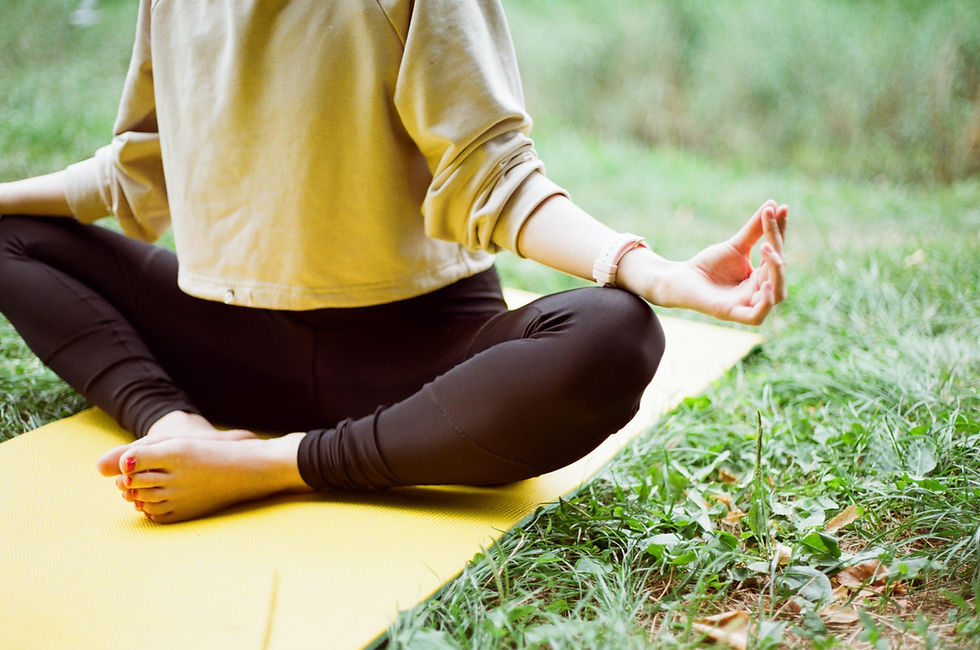Evolving Your Yoga Practice
- Ellen M Patrick

- Sep 22, 2021
- 3 min read

EVOLVING YOUR YOGA PRACTICE By Ellen Patrick, E-RYT 500 & Certified Yoga Therapist As a teacher of yoga for almost 2 decades, I have seen many students’ practices fluctuate over the years. I, too, am now experiencing a similar fluctuation. Since I began practicing 40 years ago, my now 57-year-old body is not moving as fast and fluidly as it use to. It is tighter and not as strong. And I need a lot more time to warm up and cool down. Old injuries rear their ugly heads and new ones pop up. Giving up my practice is not an option. But neither is pain and discomfort. So I have begun a reevaluation of my approach and relationship to yoga. It is time to recognize the need to adapt and accommodate the aging process. During this contemplation, I was reminded of the classical yoga tradition of Sri T. Krishnamacharya and his philosophy of the stages of life. ------------------------------------------------------------------------------------------------------------- Each day, the sun rises, peaks and sets. Our lives can be viewed through this lens of the various phases of the sun. Sunrise is considered a period to cultivate development; Mid-Day, a therapeutic stage; and Sunset, a time for self-reflection/self-realization. With a clearer understanding of the phase in which you dwell, a yoga practice can be designed that will most appropriately meet your needs and disposition. SUNRISE: Developmental or Siksana We are born into the dawn of our human experience at Sunrise, which begins at birth and ends somewhere around the age of 25. During this period, communication, intellects, and bodies are developing. This is a time when we are bursting with energy, adventure and curiosity. To facilitate this growth and exhilaration, a personal practice designed to cultivate strength and vitality would best contribute to the requirements of a developing young person. Asana practices such as Power Yoga, Ashtanga Yoga and Hot Yoga would be appropriate. In conjunction with asana, the study of yogic texts such as the Yoga Sutras of Patanjali would be encouraged. These sutras (short, concise pearls of wisdom) were originally passed on from teacher to student through chanting and memorization. In fact, students had to learn how to perfect the Sanskrit chanting before ever learning the meaning behind the sutra. This technique not only helped developed a fierce memory, but also initiated the study and inquiry of the philosophy of yoga. Through this inquiry, students were primed for the challenging ups and downs of a full life. MID-DAY: Therapeutic or Cikitsa As the sun reaches its peak, Mid-day will begin around age 26 and can last until 70. Also known as the householder phase, an appropriate yoga practice would be one in which an individual is supported in the ability to fulfill obligations and responsibilities within the work environment, to the community and to family. Stability needs to be cultivated at the level of physical structure, physiological health as well as emotional well-being. It is imperative to focus on injury prevention and rehabilitation, energetic replenishment, nervous system regulation and stress management. An asana practice would include adaptations of poses to accommodate anatomical imbalances. Viniyoga and Iyengar Yoga are ideal methodologies for this stage in that they support the individual to achieve maximum benefits without depleting energy or compromising structure. In addition, it is at this phase that a regular practice of pranayama is nurtured. Asana is no longer the focus, but is the vehicle upon which breath travels. Through breath control, vitality is cultivated and maintained. SUNSET: Self-reflection/self-realization or Adhyatmika As the obligations and responsibilities of the householder start to wane, one begins to contemplate the meaning of life, share wisdom and prepare for a merging of the soul back to source. The Sunset phase starts around 70 until the end of life. It is a time when connection to Spirit is deeply developed and embraced in anticipation of the final moments of life. Yoga practice now moves further away from asana, but grows in refinement of pranayama, meditation, prayer and ritual. Fear of death is conquered and a peaceful mind and heart can be nurtured. ------------------------------------------------------------------------------------------------------------- My current yoga practice has been adapted for sustainability. It strengthens and protects my vulnerabilities. The dancer in me enjoys slow, flowing movement that empowers me to remain mindful and present. Meditation is a non-negotiable. Pranayama balances and regulates my nervous system. When practiced daily, I feel grounded, confident and calm.




Comments